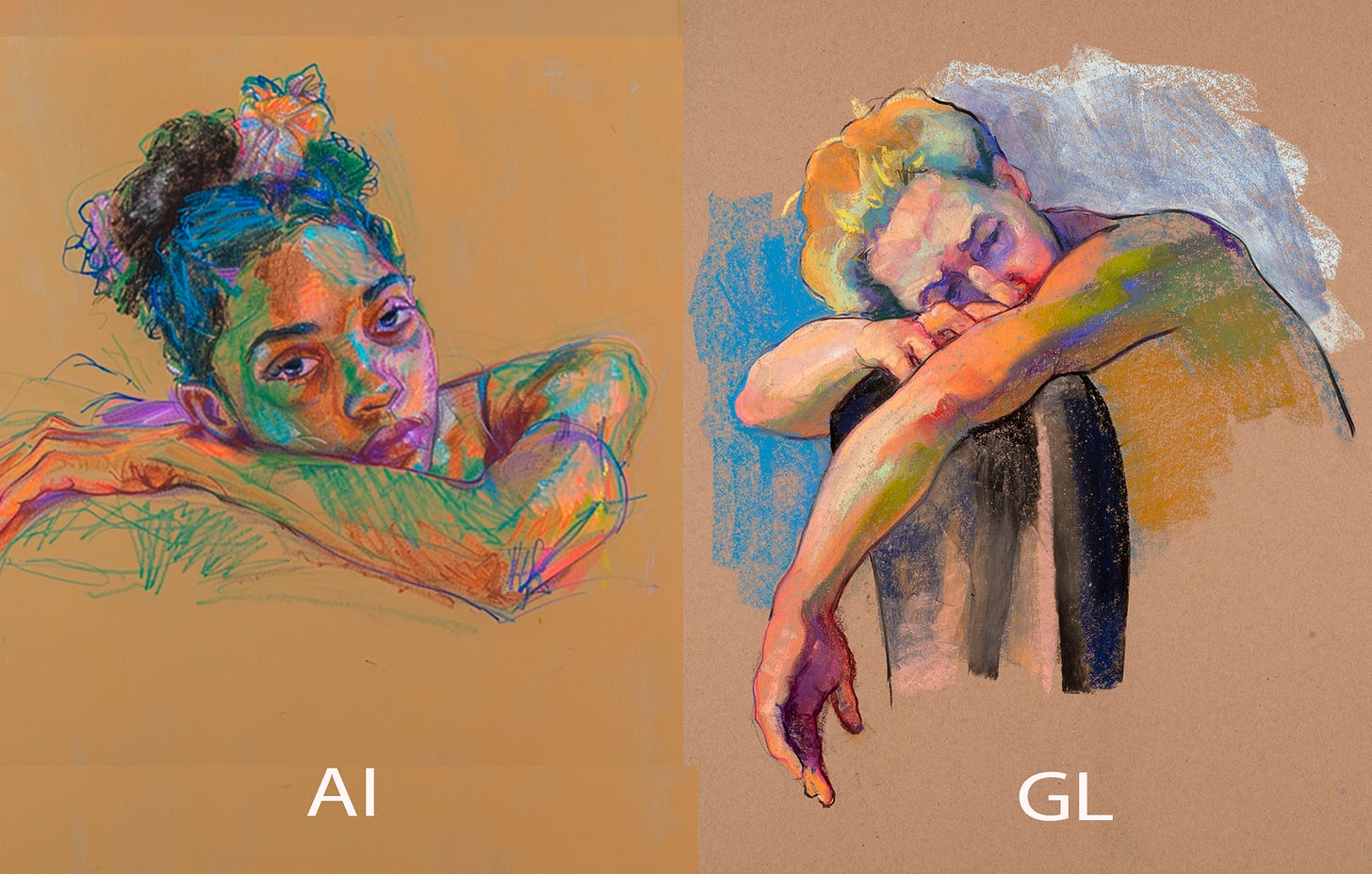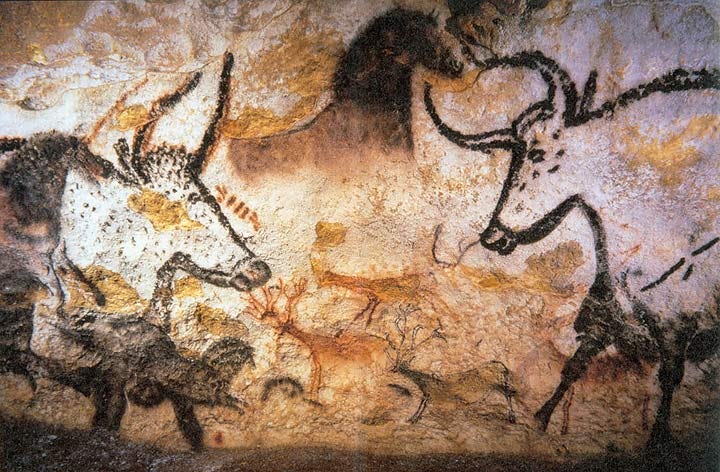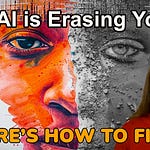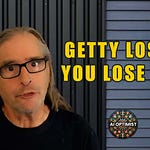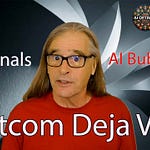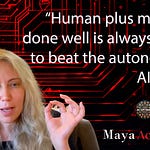“Art is not just about technique or style; it's about capturing the human experience, the raw emotions that words alone cannot convey.
How can an AI truly understand the depths of what it means to be human?"
Geoffrey Laurence
Scarlett Johansson and the tech giant OpenAI go at it, sparked by the release of an AI-generated "synthetic" voice that badly resembles Johansson's.
This "Wonderbread" AI voice stokes social posing around artistic expression, intellectual property rights, and advanced AI capabilities.
Meanwhile, in a colder corner of the brave new creative world, artists like Geoffrey Laurence feel the sting of an industry training its algorithms on their life's work without consent.
When a friend prompts the AI to create an artwork "in the style of Geoffrey Laurence." The result?
A dull imitation, a mere shadow of Laurence's rich, detailed works. Artistic slight and misrepresentation, targeting the heart of what it means to be a creator.
Geoffrey Laurence is an American painter known for his emotionally charged paintings and drawings.
While employing a realist style, Laurence considers himself an "emotionalist" painter, aiming to evoke powerful emotional responses through his work.
Explore at GeoffreyLaurence.com.
His paintings have been exhibited across the US and in Europe including the Las Vegas Art Museum, Yeshiva University Museum and the Arnot Art Museum.
His work can also be seen at the Museum of Biblical Art (Dallas) and the Fulginiti Pavilion at Anschutz Medical Campus.
His challenge to the AI industry is not just a plea for AI to protect the work and interests of artists, based on permission and compensation. It’s a call to respect human creativity.
Podcast Highlights
Scarlett Johansson vs OpenAI: AI-generated voices badly mimicking celebrities without permission. Not even a story, but in AI, another rage. Lots of lawyers on both sides.
Wonderbread AI: How bland and uninspired AI like this muddles appreciation of art and what this means for the future of AI creativity.
Geoffrey Laurence's Stand: The emotional and professional impact on artists whose work is being used without consent to train AI models.
The Cheap Imitation: The story of Laurence's friend prompting an AI to create art in Laurence's style and the disappointing results.
Laurence's Challenge: A powerful call to action from Geoffrey Laurence, urging the AI industry to protect and respect artists' rights.
Geoffrey Laurence's AI Challenge
Geoffrey Laurence, an artist with a rich catalog of work, believes in the profound depth of art.
"Life is far deeper than having surface entertainment,"
Laurence's art, crafted over decades, is about human emotion and experience.
One day, a friend, fascinated by AI, prompts to create a painting in the style of Geoffrey Laurence. The result was a poor imitation lacking the depth and detail characteristic of Laurence's work.
This cheap version, not only in his style but also in his name, was like Napster stealing music, only no one cares.
His challenge to the AI industry is a call for justice:
Respect the artists whose work you've used to build your algorithms.
Protect our legacy, honor our craft.
The differences between traditional emotional expression in art and an emotionless, AI-driven approach are profound.
Traditional Emotional Expression in Art:
Human Touch: Artists infuse their personal experiences, feelings, and thoughts into their work. Adding a unique, deeply personal element to art.
Subjectivity: Traditional art is subjective, with interpretations varying widely based on perspectives and emotional responses.
Emotional Resonance: Artworks aim to evoke specific emotions in the audience.
Cultural Context: Traditional art reflects the cultural, social, and historical context of its time, providing insight into the artist's world and experiences.
Imperfections: The human element introduces imperfections and spontaneity, adding to the artwork's authenticity.
Narrative: Many tell a story or convey a message, with symbolic elements invite emotional engagement to better interpret.
Emotionless, AI-Driven Art:
Algorithmic Precision: AI-generated art produces highly precise and technically flawless images, lacking the imperfections human artists might introduce.
Objective: AI art lacks subjective emotional input, resulting in works seeming detached or clinical.
Lack of Intent: AI does not have personal experiences or feelings, so its creations lack the emotional depth coming from human expression.
Uniformity: Without emotional spectrums, AI artworks appear uniform or repetitive, lacking the diversity of styles and expressions seen in human art.
Novelty: AI creates novel combinations and patterns that might not be intuitive to human artists, offering a creativity more experimental, and less emotionally driven.
Interactivity: The interaction between the artist's intent and the viewer's perception is missing, as AI does not intend to convey specific emotions or messages.
Traditional art is deeply rooted in human emotion, experience, and cultural context, making it rich in personal and subjective meaning.
AI-driven art, capable of technical brilliance and novel creations, often lacks the emotional depth and personal touch giving artworks their profound impact.
The Blandscape or combine AI with Art the Right Way
As the AI industry surges, Laurence's concern echoes that of countless artists whose life's work has been co-opted, often without their knowledge or consent.
It raises profound questions about intellectual property, artistic expression, and the potential devaluation of human creativity by technology.
Consider a future where artists are protected and embraced as partners in the development of AI art.
A future where their consent is sought, their intellectual property is safeguarded, and their contributions are compensated as an integral part of the creative process.
The best disruptions of AI will be people like Geoffrey Laurence, creating works of emotional depth and ingenuity with 600 years of art as inspiration.
Instead of opting to tokenize the elements, open up to the inventiveness and intuition that drives art.
Society cannot live by technology alone. Even though AI is trying….





